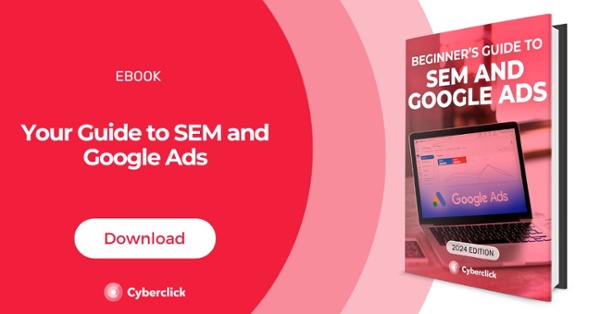- Home
- Cyberclick Academy
- Advertising
What Is Advertising and How Can It Help Your Company?
Advertising Content
- What Is Advertising and How Can It Help Your Company?
- The Benefits of Social Media Advertising
- What Are the Advantages of Advertising on Facebook?
- What are X Ads, Types of Campaigns, and Success Stories
- What Are LinkedIn Ads and How Can They Benefit Your Business?
- Discover How Instagram Ads Can Benefit Your Business
- How an Online Advertising Agency Can Help You Improve Your Marketing Strategy
- What Is an Advertising Campaign? Strategies for a Successful Launch
- Benefits of Online Advertising and How to Get Started
- 10 of the Most Popular Types of Online Advertising
Index
Advertising is a complex and multifaceted phenomenon that can be viewed from many perspectives. It involves the viewer, the advertising agency, and the company utilizing it to achieve specific objectives, such as increasing sales, establishing brand recognition, and introducing new products or services to the market.
At its core, advertising comprises a set of strategies used to raise awareness of products and services. That being said, it's not just about telling people that a product exists. Advertising can also help shape a company’s brand identity and reputation. Paid advertising is crucial for achieving these goals, including the subtle influence of a company’s message and consumers' perceptions of a brand's quality. Without paid advertising, accomplishing such objectives would be much more challenging, which is why businesses of all sizes invest in advertising campaigns.
What Is Advertising and What Is It For?
Advertising is a paid form of communication companies use to promote themselves through various mediums. Advertising encompasses traditional offline channels like print, radio, TV, product placement, external advertising, direct advertising, and digital platforms such as videos, search engine ads, display ads, social, email marketing, etc. The choice of advertising channel(s) depends on the company’s objectives and its target audience.
Developing a strategic media plan and measuring campaign performance is crucial for enhancing brand image, increasing awareness, and driving sales in a competitive marketplace. Staying updated on emerging trends and consumer preferences is vital for effective advertising in the dynamic digital landscape.
Here are some elements that we at Cyberclick think are crucial when it comes to online advertising.
-
Advertising on social media. Most of your audience is on social media, so you must keep social ads in your advertising strategy. Google and Facebook are two of the largest advertising platforms in the digital environment, so make sure to utilize them to reach your target audience.
-
Facebook Ads. Facebook is still the king of social media, with over 3 billion active monthly users worldwide. This means that you have a huge potential audience to reach with your ads. With multiple campaign possibilities, different types of objectives and formats, a variety of segmentation options, and many other parameters available, you can reach your target audience at the right time.
-
LinkedIn Ads. A great way to connect with a well-segmented professional audience. While the platform tends to have a higher cost compared to others, it offers a strong return on investment, especially for B2B marketers. With millions of professionals and executives from diverse industries using the platform, LinkedIn remains a valuable tool for targeting decision-makers, particularly those in higher-income brackets.
-
Instagram Ads. Capitalize on the popularity of Instagram, especially among Millennials and Gen Z. With over 2 billion monthly active users, the platform presents itself as a key marketplace for new and old brands alike. In fact, Sprout Social found that 61% of Instagram users say they use the platform to discover new products. This percentage was the highest out of all the social media platforms analyzed in the study including Facebook, TikTok, YouTube, and X.
-
Online Advertising Agency. When choosing an online advertising agency, it’s important to do your research and understand how each business works within the digital advertising sector.
-
Advertising Campaign. These groups of ads are created with a common goal, such as increasing brand awareness, generating leads, or driving sales. Campaigns can include text, images, videos, segmentations, advertising channels, and native advertising, among other elements.
-
Online Advertising. Digital advertising is a broad term encompassing all forms of advertising delivered over the Internet.
-
Types of Advertising. There are many different ways to advertise online, but the best way to advertise will depend on the funnel stage (TOFU, MOFU, or BOFU) your target audience is in. Various tools can help you create and implement the type of ads you want, and the funnel advertising methodology can guide your advertising decisions.
12 Characteristics of Advertising
Here are the 15 most noteworthy characteristics of advertising.
-
The purpose is to promote a product or service and encourage people to purchase it.
-
Its primary function is to persuade the consumer to buy the product or service being advertised.
-
It is part of a company's marketing strategy, whether online or offline.
-
It targets a specific buyer persona.
-
It costs the advertiser, which can be a company, organization, or individual.
-
It strives to create original and attention-grabbing ads.
-
It can be delivered through a variety of channels.
-
Reputation is a fundamental characteristic of advertising.
-
It often offers the ability to customize ads to appeal to specific target audiences.
-
Advertisers should always be ethical in their advertising practices.
-
It often aims to evoke emotions like happiness, fear, or nostalgia to create a deeper connection with the consumer and drive their purchasing behavior.
-
It relies on creative and innovative approaches to capture attention and differentiate the brand from competitors in a crowded market.
Advertising Strategy
The design stage of an advertising campaign is composed of several different parts. Companies outside the marketing sector often overlook this step, but it is crucial to have a solid plan in place to achieve the desired results. Below are some key points to consider when developing an advertising strategy.
-
Copy Strategy: This process defines the main idea of the campaign. It should include the company’s objectives, which will then be sent to the creative team. From there, the creative team will transform the initial proposal into the final advertising content.
-
Creative Strategy: Once the copy is finished, it will be analyzed by the creative team in two phases. First, they will ensure that messages are creative and engaging enough to convince or convert the consumer. Then, the message will be transformed into a final piece of art, which may include images, videos, infographics, and custom fonts. This is all part of graphic design carried out by advertising creatives.
-
Media Strategy: This is where you specify which media platforms the campaigns will be published on. This depends on the desired reach and the segmentation that you have determined. Analyze all of the options until the perfect plan is created.
Crafting Compelling Advertising Messages and Language
When a company invests in marketing, it’s not enough to just have a message. The language of advertising is a critical part of connecting with your audience. Even though the goal is to get customers to buy, simply posting an ad that says “BUY THIS” is not motivating or inspiring. Therefore, crafting a compelling message before sending it out into the market is necessary.
One way to do this is to create a powerful slogan. This is one of the most effective marketing strategies because it sticks with people. For example, Nike’s "Just Do It" is a simple yet effective and popular message. They use it across different media (video, billboards, online ads, etc.) because it resonates with people and represents the brand’s ethos.
Another marketing tool that is less widely used by companies is music. Many businesses have reminded consumers of their brands through catchy songs that incorporate key information about them. The Folgers Coffee jingle in the US is a well-known example. Who doesn’t remember that one?
Differences Between Online and Offline Advertising Techniques
With the arrival of the internet came a series of new marketing formats collectively called online marketing. Simply put, if the medium or format of a campaign relies on the internet, it is called online advertising. Otherwise, the campaign would be referred to as offline advertising.
A great advertising campaign often requires online and offline formats to fully achieve its objectives. Although investments in online advertising have been growing in recent years. When companies are asked about their advertising budgets, they always confirm that they invest more and more in online advertising every year.
-
Costs: Due to the wide range of online and offline advertising options, it is not possible to generalize. There are both cheaper and more expensive options available. However, online advertising can be more cost-effective than traditional ad campaigns and offer various payment options (like PPC).
-
Direct Conversion vs. Indirect Conversion: One of the key differences between traditional advertising and online advertising lies in the conversion rate. When online, users can immediately interact with a campaign and take action. This level of direct conversion is not achievable with offline advertising.
-
Metrics and Recruitment Methods: Online advertising offers more precise metrics and recruitment methods than offline advertising. It offers advertisers and marketing agencies convenient access to user information and data through the tracking of ad performance, a feature generally absent in offline advertising platforms.
-
Adjustments in Real Time: One significant advantage of digital ads is the ability to make real-time adjustments to campaigns. Companies can adapt their advertising investment strategies within minutes by leveraging comprehensive analysis derived from metrics.
-
Reaching the Target Audience: Because digital ads require internet access to reach audiences, this can create difficulties for individuals without internet connectivity. However, online marketing offers a distinct advantage through precise segmentation, This means that advertisers can target their ads to specific demographics, interests, and behaviors. This precise targeting allows advertisers to focus on population segments that align with campaign objectives. In contrast, offline mediums lack such targeted filters, limiting their ability to reach specific audiences effectively.
Advertising is an absolute necessity for businesses. It is important to develop strategies specifically designed to build brand recognition among consumers in your target market.
This is a challenging process, so we highly recommend that you entrust this work to specialists in the sector who can offer you the best possible results!
CEO and co-founder of Cyberclick. David Tomas has more than 20 years of experience in the online world. He is an engineer and completed an Entrepreneurship program at MIT, Massachusetts Institute of Technology. In 2012 he was named one of the 20 most influential entrepreneurs in Spain, under the age of 40, according to Global Entrepreneurship Week 2012 and IESE. Author of "The Happiest Company in the World" and "Diary of a Millennial".
Recursos para seguir aprendiendo: ebooks, vídeos y cursos

Cyberclick

Cyberclick

Cyberclick

Cyberclick

Cyberclick



